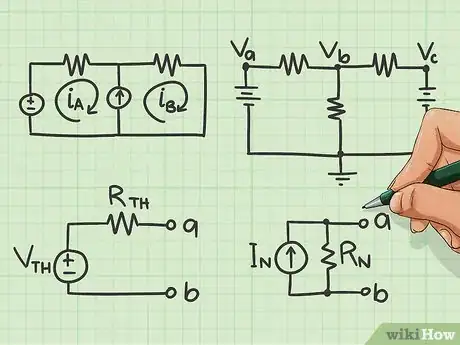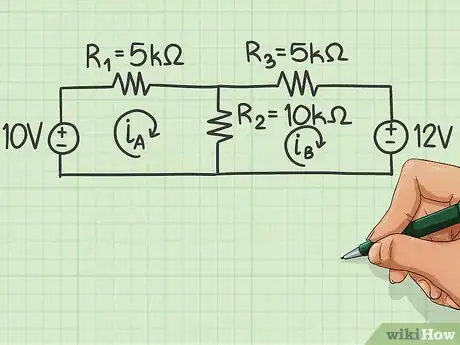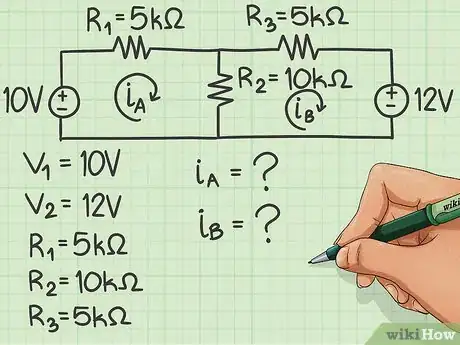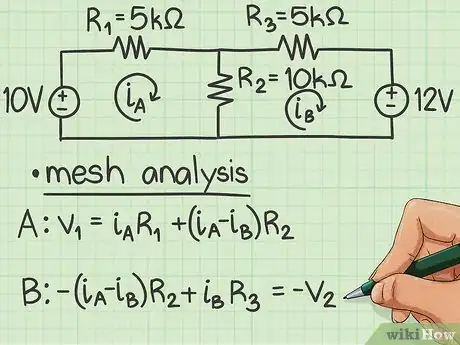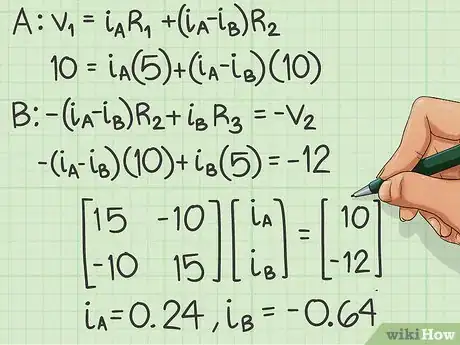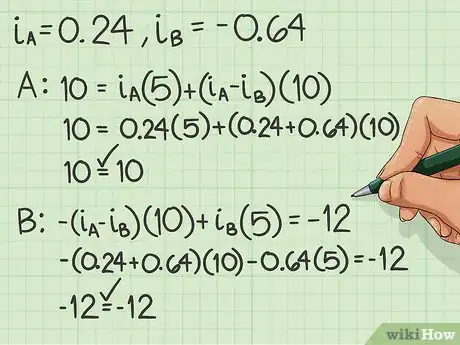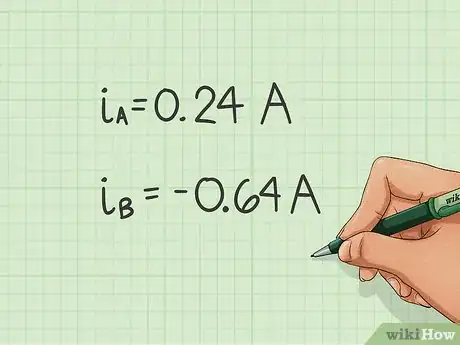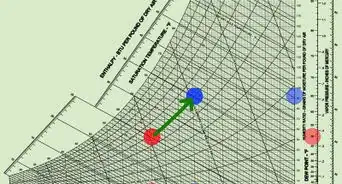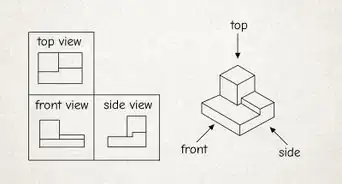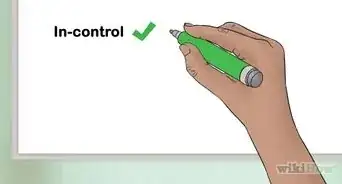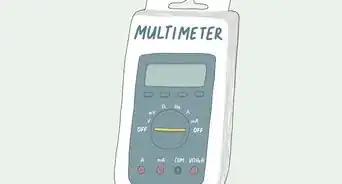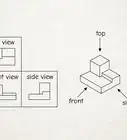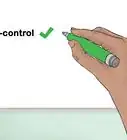X
wikiHow is a “wiki,” similar to Wikipedia, which means that many of our articles are co-written by multiple authors. To create this article, 14 people, some anonymous, worked to edit and improve it over time.
This article has been viewed 22,844 times.
Learn more...
Solving circuits is one of the most challenging tasks for the undergraduate student as it involves numerous theorems, concepts, and processes for solving the circuits. But following a planned problem solving strategy simplifies the problem, making it easier to solve.
Steps
-
1Develop confidence in your problem solving skills. Confidence is the first and most prominent task to solve the circuit problems. Believe that you can solve the problems, then, ultimately, the formulas, information and ideas will come to your mind.
-
2Gain knowledge of mesh analysis[1] , nodal analysis[2] and some theorems like Thevenin equivalence, Norton equivalence, and superposition.Advertisement
-
3Examine the problem carefully. Look at the circuit and be clear about what is to be determined.
-
4Write down all the givens, organize the information and think about the best way to attack the problem.
-
5Work out the possible solutions on paper. Normally, there are many ways to solve a circuit but there are only one or two easy ways to the solution.
-
6Keep the overview of the problem in sight. Remember, while solving circuits, to slowly review the solution process in your mind. This will lead you to the next step in your solution. It is part learned attack strategies and part insight. The most helpful problem-solving skills will be developed over many sessions and by acquiring a good understanding of circuit theory and the transforms and simplifications that are available.
-
7Develop your set of equations. Remember that you are working with a set of equations and can use linear algebra techniques and matrix manipulations to easily extract a solution or solution sets. If you are not familiar with linear algebra, take the time to learn the techniques, particularly Cramer's rule, and to develop proficiency. This tool will speed your analysis immensely.
-
8Check the answers. First, ask yourself if the answer seems reasonable. Remember, most solutions are physically possible, though not all. Use the substitution method to verify your answer.
-
9Record your answer in the required format and include the proper units.
Advertisement
Community Q&A
-
QuestionWhy would I have electricity with fuse out of fuse box?
 DonaganTop AnswererApparently there is another circuit not affected by the fuse.
DonaganTop AnswererApparently there is another circuit not affected by the fuse.
Advertisement
References
About This Article
Advertisement

